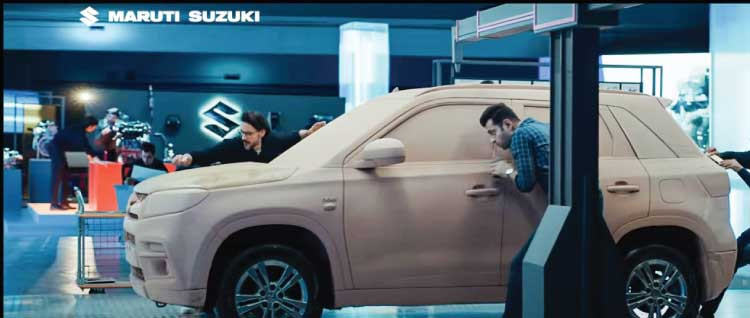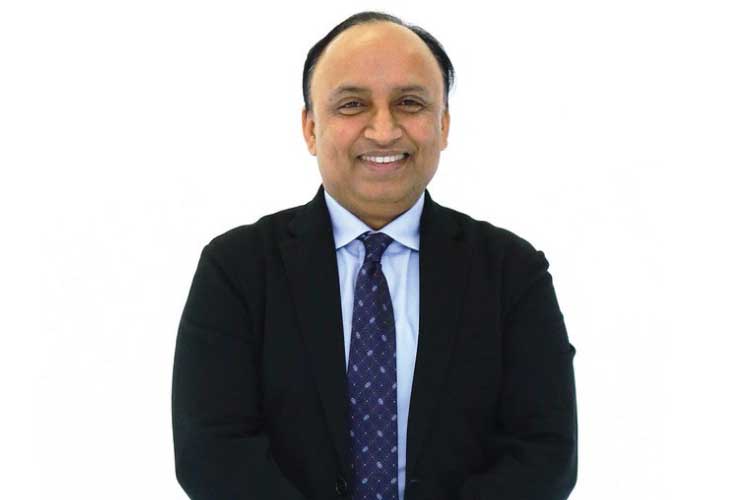Q] What is the insight behind your latest campaign, ‘People Technology’?
The objective is to enhance the experience of the customer using the product. If we have to enhance consumers’ lives through the products they use and through technological interventions, then there has to be a noticeable difference that ensures consumer satisfaction and meets their requirement. That became the focus of all the technology that we introduced. This comes from consumer insights, through years of research and continuous observation of consumer behaviour. The concept of ‘People Technology’ has been powered by a series of videos which highlights seven recent path-breaking technologies.
Q] How you are leveraging each medium for this campaign?
The biggest spends are on Television, then Print with digital spends around 25% to 30%. Within Television, we are using the OTT platform as the consumption of video by younger buyers has increased dramatically on OTT. So, our media mix is Television plus OTT, Print, and then a large part is Digital.
Q] You mentioned OTT under television and not digital…..
Personally, I don’t look at the OTT platform or any video input as Television, Digital or OTT but as a medium for Video on Demand advertising. The debate is still on whether OTT should be considered part of television, or digital as we understand in the conventional terms. I think it is fluid because both Digital and OTT are new mediums. We’re still developing and the hard segmentation of media into OTT versus television versus digital has not yet been formed.
Q] Maruti’s communication focuses on innovations and technologies that delight customers. How do you record the customer feedback on their experiences with the brand? Taking this ahead, how do you work to further enhance their future experiences?
One is to understand the customers’ current requirements and usage; see how things are changing on each parameter and then make an estimate of what the future requirements will be. This is done through brand track studies, consumer focus group discussions or through social media listening. We map the current consumer with our various products and the expectation of their future movement. We also map future customers, what the demographic and psychographic makeup will be, and then conclude on the type of campaign which we should work on. The ‘People Technology’ campaign is a people based campaign where we have highlighted different relationships between people. For eg, we have a father and son talk about the S-Cross and HEARTECT Platform’ that is designed with a core focus on safety. Another film has a family talk of Suzuki Connect, a Telematics Control Unit (TCU) solution, which aids in vehicle tracking. We have shown different relationships and how they’re empowered by the automotive technologies and how technology connects with people’s lives.
Q] Were there any specific behavioural changes that were unexpected as a result of accelerated move to Digital, especially over the past year?
Yes, the rate at which digital conversion happened due to the pandemic. In 2016, digital inquiries were just 3% of our total inquiries; in 2019-20, this went up to 15%. However, during the pandemic, digital enquiries climbed up to almost 50% before coming down to about 40%. This journey from 15%, to 40%, was done in three months, while it took three years to go from 3% to 15%. The huge digital acceleration was a big surprise. Second, a lot of consumers moved away from public transport and shared mobility to personal mobility. What also became starkly evident during and post the pandemic was that trust is the new currency of brand differentiation. The brand differentiation is no longer so much about the product or segment, it is clearly the trust factor. We learnt this lesson and are trying to build that trust in our communication. Another surprise was the buying pattern itself, with utility rather than functionality taking prominence this year.
Q] The auto sector saw a downturn for two consecutive years. What has been the recovery for the sector since the high seen in FY19?
2019-20 sales were about 18% lower than 2018-19, as the cost of acquisition went up because of the implementation is new BS6 norms and tightening of finance. This year also cumulatively so far we are 16% down. However, the positive is that, post pandemic we have seen a month-on-month improvement. We saw good growth in Q2 and Q3 and are quite hopeful of Q4 also being good. It is getting better and we hope that the economic growth will continue, and the sentiment on COVID-19 will be better than last year. Overall, cumulatively we are down about 33%-34% from the high of FY19 and in the future, we’ll try to reach that level.
Q] Will a positive sentiment translate to higher ad spends by the auto sector overall and Maruti in particular?
Yes. So we are projecting a 15% increase in ad spends for the industry for the next year.
Q] And Maruti will be also along the same line?
It depends clearly on our new launch and it could be a little more.
Q] ‘Rethinking and Re-imagining’ was the basis of Maruti’s digital transformation. However any transformation implies massive change. What were your biggest takeaways?
When we talk about digitalisation, it’s not just about using the platform for inquiry management. In finance, we brought about a big change with e-finance, an industry first, and we offer end-to-end financing on our digital platform. We started subscription service where consumers can use their cars without the hassle of asset ownership. These are some of the things which were started based on insights of consumer change behaviour. Our research shows there are 26 touch points, between the time consumer thinks of buying a car to when he actually takes the delivery. Of those 26, 25 touch points are now digitalised. The automobile industry is phygital rather than digital because there are aspects, like test drive and actual delivery, which will always be physical but we are adopting digital at a higher level.
Q] What can we expect from Maruti Suzuki in FY 22?
Our efforts will be to increase volumes and keep our market share. There are challenges but as market leaders, we are quite conscious that we have to carry the industry along and all our efforts are geared towards that.
























